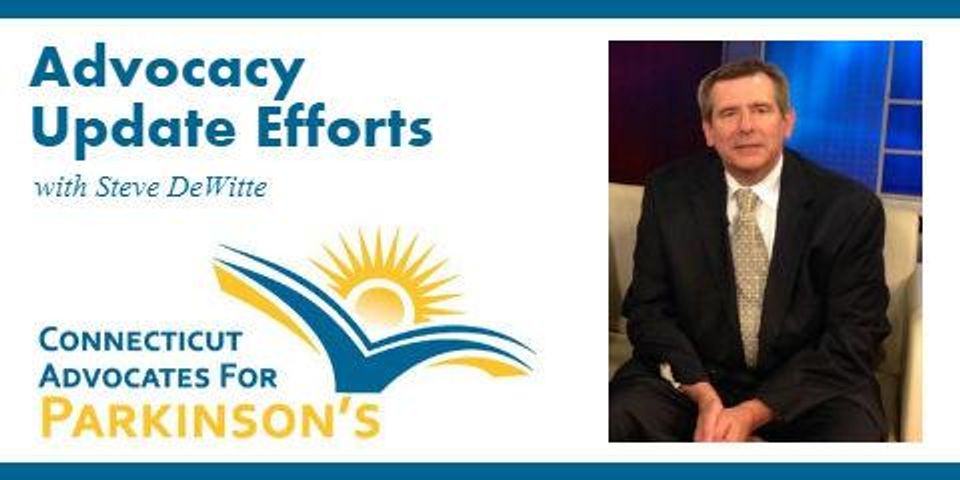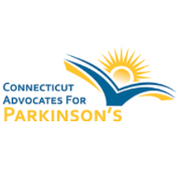September CAP Advocacy Efforts Update with Steve DeWitte

So much great info to share, and so little space!!
First – what I’m up to in the coming weeks: always trying to advocate on behalf of PWP’s!!
On September 13th and 14th, I’m participating in a special “Live Well, Do Tell” event in New Jersey, sponsored by Acorda. This is part of an effort to “broaden the conversation,” and to elicit common terminology for PWP’s to help in describing specifics of our disease to Doctors and medical professionals.
On September 22nd and 23rd, I will be attending the “6th Annual Shaping the Management of Parkinson’s Disease” event in Las Vegas, a weekend dedicated to “Debating the Most Controversial Issues and Discussing the Latest Breakthroughs in Parkinson’s: A Special Weekend CME Program with Parkinson Study Group Investigators.”
Special thanks to the Cure Parkinson’s Trust for sponsoring my trip.
On September 26th & 27th, I will attend the “Grand Challenges” symposium at the Van Andel Institute in Grand Rapids, Michigan. “Grand Challenges in Parkinson’s Disease brings together hundreds of scientists, clinicians and people with Parkinson’s to explore the latest Parkinson’s disease research. The theme for 2018 is Non-Motor Symptoms, which will highlight the roles of the gastrointestinal tract, the olfactory system and the immune system in the onset and progression of Parkinson’s.”
In addition, at that event I am very excited to present an idea called the “Isaac” measure, which, I hope, will lead to a common set of quantitative evaluation criteria to help rank compounds that may be used in multiple ways, i.e., originally used for one issue, but works well on another.
####
Second – what I have been up to recently – and why it might matter to you!
I visited the Scripps Research Institute in LaJolla, Ca. on August 14, 2018. It is the home to The Loring Lab, headed by Dr. Jeanne Loring, a leading scientist at Scripps, who, in her own words, says: “We focus on human pluripotent stem cells, the remarkable cultured cells that can become every cell type in the human body. Most of our research is on induced pluripotent stem cells (iPSCs), which we make from cells cultured from skin biopsies”.
At the time of my visit, they were in the process of moving to a new location on the Scripts Campus. The new location is designed to be more efficient in their next phase of research. I had wanted to visit this facility for some time, since meeting several of their staff at a conference and hearing them speak enthusiastically regarding their Stem Cell Work.
Why is this important? There are two “In Human” Stem Cell Studies currently being conducted in Australia, and there are three additional Research sites that have been part of the “G-Force Consortium” that have been collaborating and expect to begin “In Human” studies before year-end.
It’s been quite a journey, but to finally reach a Proof of Concept in Human Study, took much commitment, perseverance, and collaboration! There remains much to learn and resolve, but there seems to be growing agreement that stem cells are capable of being programed to serve as dopamine neuron replacement. Should the upcoming studies provide symptom relief in Parkinson’s, it would be the first disease management treatment for this progressive degenerative neurological disorder.
What Can You and I do to keep the momentum going?
- Keep the conversation going. The subject of Stem Cell Research is an “On Again ~ Off Again” subject, which often is mired in the moral debate before the latest science advances can be celebrated. Parkinson Public Policy leaders are evaluating where Stem Cell Research should fall on an expansive list of needs that we present to our Federal legislators and Public Health Administrators. It may be better received at an appropriate office in your State Capital.
- Don’t be afraid to share when concluding a conversation with a person of influence, …something like…….“by the way”……Did ya hear the one about these two stem cells walk into bar………”
About the Business
Have a question? Ask the experts!
Send your question

